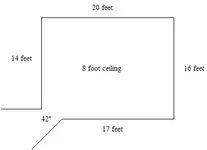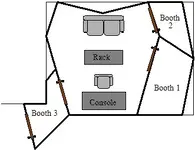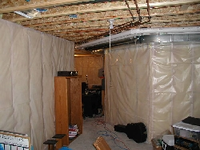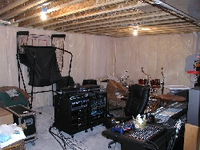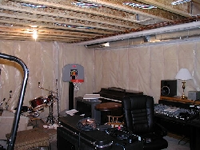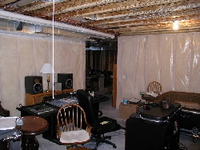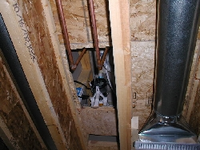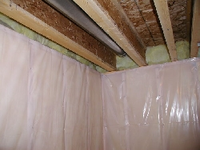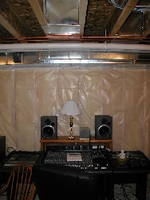Velvet Elvis
Ahh humma humma humma
Hey all...
I think I know the answers to some of these, but I wanted to get some feedback...
I'm starting in on building my new studio in my basement. The walls of the studio area are solid concrete (foundation of the house) and the ceiling of the studio will be RIGHT at the height that the wood footers for the upstairs walls meet the concrete (IE - the ceiling will be just below the I-beams).
The contractor who built the house by law had to frame the exterior walls, insulate and wrap the walls (they are ready to be dry walled)... I'm wondering if this is an adequate start... or do I still need to build free standing walls (given that the outer walls are concrete?)
There is only a 4 foot wide exit space leaving the room... otherwise ALL walls are solid concrete (no windows). The ceiling is my biggest issue (making sure that is isolated).
Thoughts?
Velvet Elvis
I think I know the answers to some of these, but I wanted to get some feedback...
I'm starting in on building my new studio in my basement. The walls of the studio area are solid concrete (foundation of the house) and the ceiling of the studio will be RIGHT at the height that the wood footers for the upstairs walls meet the concrete (IE - the ceiling will be just below the I-beams).
The contractor who built the house by law had to frame the exterior walls, insulate and wrap the walls (they are ready to be dry walled)... I'm wondering if this is an adequate start... or do I still need to build free standing walls (given that the outer walls are concrete?)
There is only a 4 foot wide exit space leaving the room... otherwise ALL walls are solid concrete (no windows). The ceiling is my biggest issue (making sure that is isolated).
Thoughts?
Velvet Elvis



